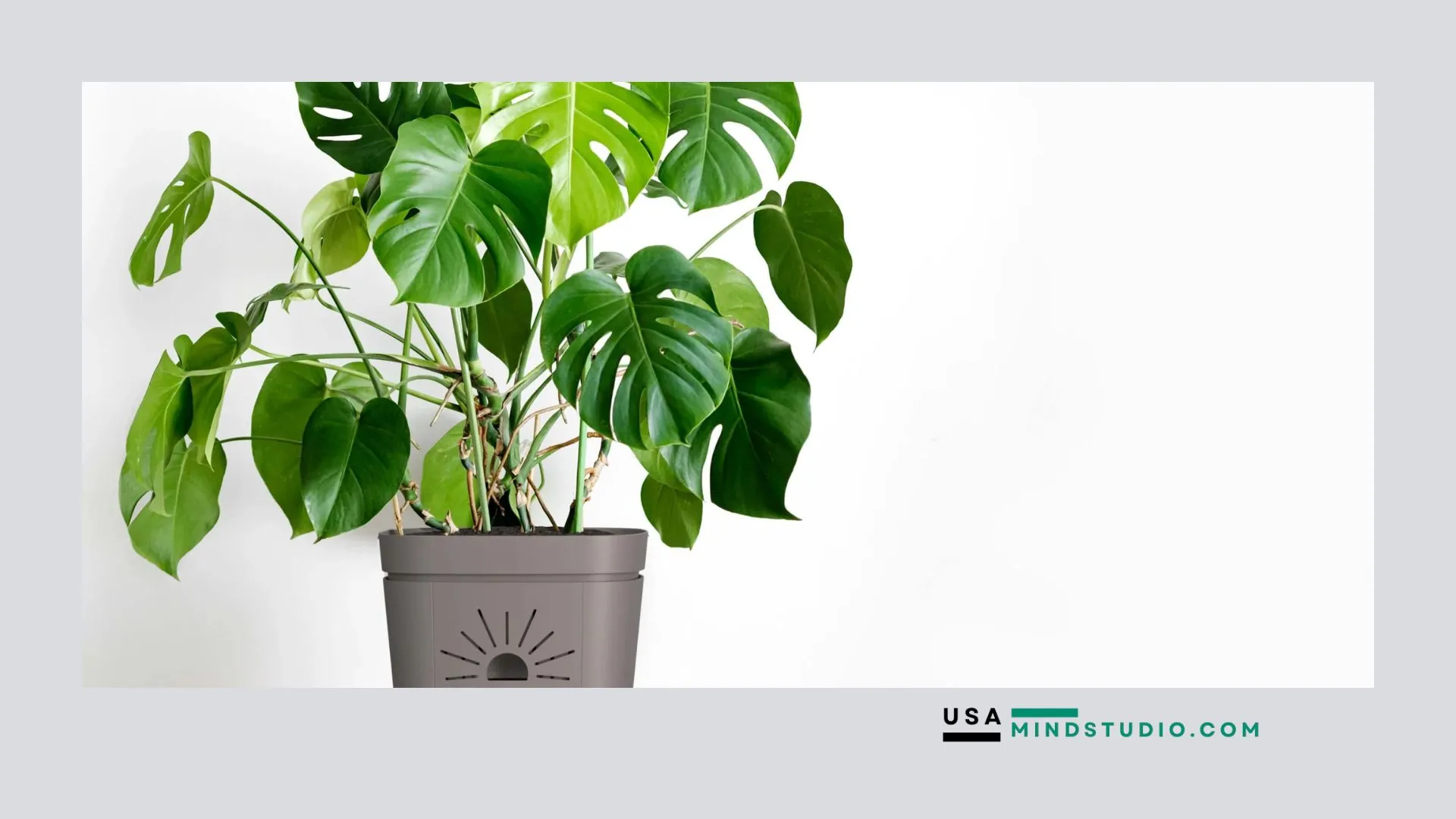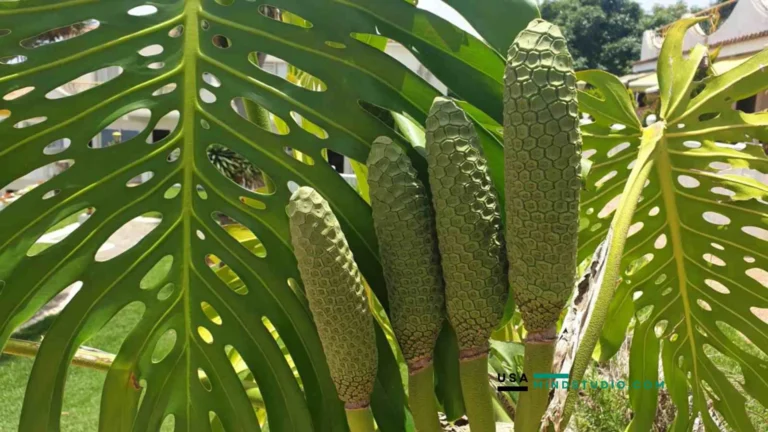
Wondering how long your beloved Monstera plant will grace your home with its stunning presence? A well-cared-for Monstera can thrive for 30-40 years, bringing decades of tropical charm to your space. But here’s the thingyour plant’s lifespan isn’t set in stone. It’s influenced by several crucial factors that you can control. Whether you’re a new plant parent or a seasoned enthusiast, understanding these elements is key to ensuring your Monstera lives its fullest life. From optimal temperature ranges to proper watering techniques, we’re about to explore 7 vital factors that determine your Monstera’s longevity. Ready to unlock the secrets of extending your plant’s life? Let’s dive into expert-backed tips and practical strategies that will help your Monstera flourish for years to come. Get ready to transform your plant care routine and give your Monstera the best chance at a long, healthy life.
Key Takeaways:
- – A well-cared-for Monstera can live for 30-40 years in the right conditions, with some specimens living even longer in their natural habitat.
- – The plant’s longevity heavily depends on environmental conditions, including proper light exposure, temperature, and humidity levels.
- – Regular maintenance practices like appropriate watering, pest prevention, and nutrient management significantly impact your Monstera’s lifespan.
- – The oldest documented Monstera plant, located at Longwood Gardens, has thrived for over a century, demonstrating these plants’ remarkable potential for longevity.
- – Common threats to your Monstera’s lifespan include pest infestations, nutrient deficiencies, and improper watering practices, but these can be prevented with proper care.
Natural Lifespan and Growth Patterns
In their natural habitat, Monstera plants showcase remarkable longevity, typically thriving for 30-40 years when provided with optimal growing conditions. Some specimens have even been known to flourish for up to 50 years in the wild.
Growth Stages
Monstera plants follow distinct growth patterns throughout their life cycle. During their early years, they exhibit rapid growth, producing new leaves every 4-6 weeks. As they mature, their growth rate stabilizes, and they develop their characteristic fenestrated leaves.
The juvenile stage typically lasts 2-3 years, during which the plant produces smaller, heart-shaped leaves without splits. As the plant enters maturity, it begins developing the iconic splits and holes in its leaves, a process known as fenestration.
Size and Development
In optimal conditions, indoor Monstera plants can reach impressive heights of 10-15 feet. Their growth pattern is naturally climbing, with aerial roots seeking support structures. The plant’s size can be managed through regular pruning without affecting its lifespan.
Each new leaf emerges larger than the previous one, with mature leaves spanning up to 3 feet in width. The plant’s growth rate is most vigorous during spring and summer months, with a natural slowdown during winter.
Factors Influencing Natural Lifespan
Several environmental factors play crucial roles in determining a Monstera’s longevity. Consistent temperature between 60-80°F, moderate humidity levels, and proper light exposure significantly impact their lifespan. Plants grown in stable, favorable conditions tend to live longer than those subjected to frequent environmental stress.
Regular maintenance, including proper watering, fertilization, and pest management, can help your Monstera reach its full life potential. While wild Monsteras may face various challenges, indoor specimens often enjoy extended lifespans due to controlled growing conditions.
💡 Key Takeaway: Monstera plants can live 30-40 years with proper care, following distinct growth patterns from juvenile to mature stages, while their lifespan is heavily influenced by environmental conditions and maintenance.
Light and Temperature Requirements
Proper lighting and temperature conditions are crucial for your Monstera’s longevity. These tropical beauties have specific requirements that, when met, can help them thrive for decades.
Optimal Light Conditions
Monsteras flourish in bright, indirect sunlight. Place your plant near an east or north-facing window where it receives filtered light throughout the day. Direct sunlight can scorch the leaves, while insufficient light leads to stunted growth and smaller leaves without their characteristic splits.
Temperature Sweet Spot
These plants prefer temperatures between 65-85°F (18-29°C). They can tolerate brief periods outside this range but prolonged exposure to temperatures below 50°F (10°C) can cause irreversible damage. Maintain consistent indoor temperatures and avoid placing your Monstera near drafty windows or air conditioning vents.
Seasonal Adjustments
During winter, move your plant away from cold windows and provide additional warmth if needed. In summer, protect it from hot afternoon sun and ensure good air circulation. Monitor the temperature around your plant regularly, especially during extreme weather conditions.
💡 Key Takeaway: Monstera plants thrive in bright, indirect light with temperatures between 65-85°F (18-29°C). Protecting them from extreme conditions and making seasonal adjustments ensures optimal growth and longevity.
Watering and Humidity Impact
Proper watering and humidity levels are crucial factors that directly influence your Monstera’s lifespan. These tropical plants have specific moisture requirements that, when met, can help them thrive for decades.
Watering Requirements
Monstera plants need consistent but moderate watering. The key is to maintain slightly moist soil without waterlogging. Check the top 2-3 inches of soil – if it feels dry, it’s time to water. Overwatering can lead to root rot, while underwatering causes leaf yellowing and premature aging.
During growing seasons (spring and summer), water your Monstera more frequently. In winter, reduce watering as the plant’s growth naturally slows down. Always use well-draining soil and pots with drainage holes to prevent water accumulation.
Humidity Needs
As tropical natives, Monsteras thrive in humid environments. They prefer humidity levels between 60-80%. Low humidity can cause brown leaf edges and stunted growth, potentially reducing their lifespan.
To maintain optimal humidity:
– Use a humidity tray filled with pebbles and water
– Group plants together to create a microclimate
– Run a humidifier nearby
– Mist leaves regularly, especially during dry winter months
Signs of Moisture Problems
Watch for these warning signs that indicate moisture-related stress:
– Yellowing leaves (overwatering)
– Crispy brown edges (low humidity)
– Drooping leaves (inconsistent watering)
– Black spots on leaves (excessive moisture)
– Slow growth (improper moisture levels)
💡 Key Takeaway: Maintaining proper watering schedules and humidity levels between 60-80% is essential for your Monstera’s longevity, with consistent moisture being crucial while avoiding waterlogged conditions.
Soil Quality and Root Health
The foundation of a healthy Monstera lies in its soil and root system. Quality potting mix provides essential nutrients and proper drainage, directly impacting your plant’s longevity. A well-balanced soil mixture should contain organic matter, perlite, and bark to ensure optimal growth.
Ideal Soil Composition
A nutrient-rich potting mix with good aeration is crucial for Monstera’s root development. Mix equal parts of peat moss, perlite, and orchid bark to create the perfect growing medium. This combination allows roots to breathe while retaining adequate moisture.
Signs of Root Health
Healthy Monstera roots appear white or light tan and feel firm to touch. If you notice dark, mushy, or foul-smelling roots, it’s a clear indication of root rot. Regular inspection of the root system during repotting helps identify potential issues early.
Maintaining Root Vitality
Monitor soil moisture levels using a moisture meter or your finger. Allow the top 2-3 inches of soil to dry between waterings to prevent waterlogging. Ensure your pot has sufficient drainage holes and never let your Monstera sit in standing water.
Repotting Schedule
Repot your Monstera every 2-3 years or when roots start growing through drainage holes. This practice refreshes the soil nutrients and provides space for healthy root expansion. Choose a pot 2-3 inches larger than the current one to accommodate growth.
💡 Key Takeaway: Quality soil mix and healthy roots are fundamental to your Monstera’s survival – use well-draining potting medium, monitor root health regularly, and maintain proper watering practices to ensure longevity.
Pest Management and Disease Prevention
Keeping your Monstera healthy means staying vigilant against common pests and diseases. A well-maintained plant can better resist these threats and maintain its expected lifespan.
Common Pests to Watch For
Spider mites, mealybugs, and scale insects are frequent unwanted visitors to Monstera plants. These tiny invaders can quickly multiply if left unchecked. Regular inspection of your plant’s leaves, especially the undersides, helps catch infestations early. A simple solution of neem oil or insecticidal soap can effectively control most pest problems.
Disease Prevention Strategies
Most Monstera diseases are related to improper watering and poor air circulation. Root rot, caused by overwatering, is particularly dangerous. Ensure your pot has adequate drainage holes and avoid letting water sit in the saucer. Leaf spot diseases can develop in humid conditions, so maintain good air flow around your plant.
Preventive Care Routine
Implementing a regular maintenance schedule significantly reduces pest and disease risks. Clean dust from leaves monthly with a damp cloth, which not only keeps the plant looking fresh but also helps spot potential issues early. Trim away any yellow or brown leaves promptly to prevent disease spread.
Treatment Options
If you notice signs of trouble, act quickly. Isolate affected plants to prevent spread to other houseplants. For pest infestations, start with the least toxic treatment options first. Many problems can be resolved with a strong stream of water or by wiping leaves with diluted rubbing alcohol before resorting to chemical treatments.
💡 Key Takeaway: Regular monitoring, proper watering practices, and swift action against pests and diseases are crucial for maintaining your Monstera’s health and extending its lifespan.
Growth and Development Stages
The Monstera deliciosa follows a fascinating growth pattern, transforming from a tiny seedling into a magnificent climbing plant. Understanding these stages helps you provide better care and support throughout your plant’s life cycle.
Juvenile Stage
During the early months, young Monstera plants display small, heart-shaped leaves without the characteristic splits or holes. They grow relatively slowly, focusing on establishing a strong root system. At this stage, the plant requires gentle care and consistent moisture.
Adolescent Phase
As your Monstera matures, usually around 2-3 years, you’ll notice the leaves developing their first fenestrations (holes). The plant begins to show more vigorous growth, with new leaves appearing more frequently. This is when the plant starts showing its climbing nature and may need support structures.
Mature Growth
Upon reaching maturity, typically after 3-4 years, Monstera plants showcase their iconic split leaves. The fenestrations become more pronounced, and the leaves grow significantly larger. At this stage, the plant can produce new leaves every 4-6 weeks under optimal conditions.
Adult Flowering Stage
In ideal conditions and with proper care, mature Monsteras (usually 5+ years old) might produce flowers and fruits. However, this is rare in indoor settings and typically occurs only in their natural tropical habitat where conditions perfectly match their needs.
💡 Key Takeaway: Monstera plants progress through distinct growth stages over several years, from simple leaves to dramatic splits, with each phase requiring specific care to support healthy development.
Propagation and Plant Renewal
Propagation offers a fascinating way to extend your Monstera’s legacy while maintaining its vitality. Through this process, you can create new plants from your existing one, essentially renewing the life cycle.
Stem Cutting Method
The most reliable way to propagate Monstera is through stem cuttings. Select a healthy stem with at least one node and aerial root. Cut just below the node using clean, sharp scissors. Place the cutting in water or moist soil, ensuring the node is submerged or buried.
Air Layering Technique
For larger plants, air layering proves effective. Wrap damp sphagnum moss around a node on the stem, secure it with plastic wrap, and wait for roots to develop. Once roots appear, cut below the rooted section and plant it in soil.
Timing Matters
Spring and early summer are ideal for propagation, as the plant’s active growth phase increases success rates. The new plants inherit the genetic traits of the parent, potentially living just as long with proper care.
💡 Key Takeaway: Propagation through stem cuttings or air layering not only extends your Monstera’s legacy but also creates genetically identical plants that can thrive for decades with proper care.
Conclusion
Your Monstera’s journey to a long, healthy life is in your hands. By understanding and implementing these seven crucial factors – from providing optimal light conditions to maintaining proper humidity levels – you can significantly extend your plant’s lifespan beyond the typical 30-40 years. Remember, every Monstera is unique, and success lies in consistent care and attention to detail. Monitor your plant’s response to different conditions, adjust your care routine accordingly, and don’t hesitate to take preventive measures against potential threats like pest infestations or nutrient deficiencies. The remarkable story of the centenarian Monstera at Longwood Gardens proves just how resilient these tropical beauties can be under the right conditions. Start implementing these care strategies today, and watch your Monstera thrive with its characteristic split leaves and aerial roots for decades to come. Your dedication to proper plant care will reward you with a stunning, long-living companion that brings natural beauty to your space year after year.
FAQs
How fast does a Monstera plant grow in optimal conditions?
In optimal conditions, Monstera plants can grow quite rapidly, adding 1-2 feet in height annually. During the growing season (spring and summer), you might notice new leaves appearing every 4-6 weeks. Growth rate depends on light exposure, humidity, and proper nutrition.
Can I grow a Monstera plant outdoors year-round?
Monstera plants can only grow outdoors year-round in USDA zones 10-12, where temperatures stay above 60°F (15°C). In other regions, they must be grown as indoor plants or moved inside during winter months to protect them from frost damage.
Why are my Monstera’s new leaves not developing splits?
Young Monstera leaves typically start without splits (fenestrations). The characteristic split leaves develop as the plant matures, usually after 2-3 years of age. Inadequate light, poor nutrition, or stress can also prevent proper leaf development.
Is it normal for Monstera aerial roots to grow very long?
Yes, aerial roots are a natural part of Monstera’s growth pattern. In their natural habitat, these roots can grow several feet long to help support the plant and absorb nutrients. You can either guide them into the soil or trim them if they become too unruly.
How often should I repot my Monstera plant?
Young Monstera plants typically need repotting every 18-24 months, while mature plants can stay in the same pot for 2-3 years. Watch for signs like roots growing through drainage holes or slowed growth to determine when to repot.
What’s the best way to clean Monstera’s large leaves?
Clean Monstera’s heart-shaped leaves monthly using a damp cloth to remove dust and maintain photosynthesis efficiency. For stubborn dirt, use a mixture of water and mild soap, then rinse thoroughly. Avoid using leaf shine products as they can clog the plant’s pores.


